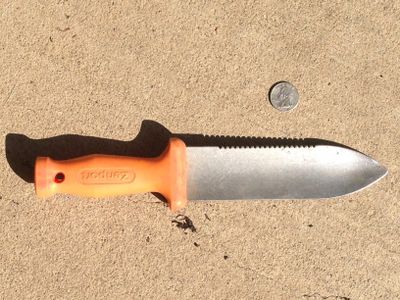What is a Japanese Digging Knife?
“Hori” is the Japanese word for “dig” and, coolly enough, “hori hori” is the Japanese onomatopoeia for the sound that digging makes. But while it’s often used for digging, this Japanese gardener’s knife has so many other uses that it’s best to think of it as a multi-purpose tool. There are a few different styles of hori hori available commercially, though the difference tends to be in the handle. The more traditional styles have bamboo or wooden handles, but it’s easy to find rubber and plastic handles, too. The basic shape of the blade itself is pretty much always the same – a length of metal that tapers to a point, with one sharp side and one serrated side. The hori hori is relatively short, usually about a foot from end to end, and meant to be wielded one-handed.
Hori Hori Knife Uses
Because of their size and shape, hori hori knives are very versatile. When using a hori hori knife, it’s best to hold it in one hand and treat it as something like a cross between a trowel and a saw and a knife.
Its long and narrow shape makes it perfect both for loosening soil for transplants and for dislodging soil from root crops when they’re ready for harvest. Its point can be dragged across the soil to make seed troughs. Its smooth edge can slice through small weeds, stems, twine, and bags of fertilizer. Its serrated edge is good for tougher jobs, like cutting through roots and small branches.
